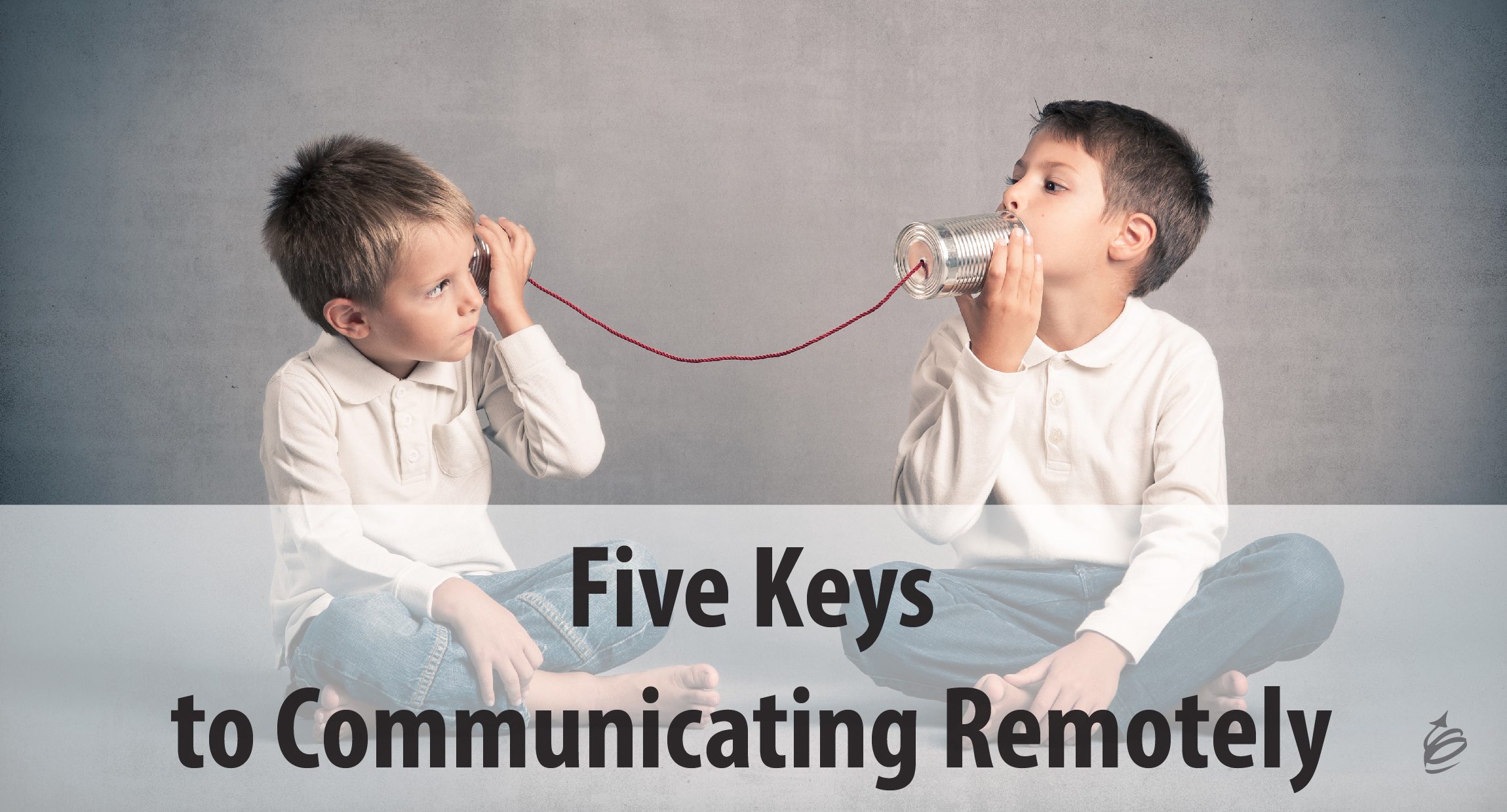 Never has the desire to and need to communicate with people distant from us been more pressing or important than it is today. And while communication is complex enough to start with, when we are doing it at a distance, even more barriers arise.
Never has the desire to and need to communicate with people distant from us been more pressing or important than it is today. And while communication is complex enough to start with, when we are doing it at a distance, even more barriers arise.
Increasingly teams are working in different locations and in different time zones; and while there are productivity advantages that can come from that fact, if we don’t get the communication right, those productivity advantages can be quickly lost, and the advantages can become liabilities.
If you want to increase the effectiveness of your communication with people who are remote from you, start with these five ideas.
Choose your tool wisely. Years ago your tool choices were simple. First there was a letter, then a telegraph and a phone. Now it seems there are more new options than that each week! The tool we use to communicate – whether email, a text, an instant message, a phone call, using our web cams, or whatever – has an impact on the outcome we will get. Each of these tools have a place and a purpose. When you want to communicate with others successfully, pick your tool based on your message and your audience. Yes, think about what they prefer, but don’t put their preference above what will most help both succeed in getting complete communication.
Focus on the message received. Communication, whether at a distance or not, is a matter of message sent and message received. The best communicators focus more energy and how they get their message received. This is even harder when you are distant from the person you are communicating with. None of the tools at your disposal are quite as good as face-to-face communication, as some level of fidelity and effectiveness is lost with each choice. When you put your focus on getting your message received, you put more of your focus on the other person, and less on yourself. This will always get you better results, especially when you can’t be face-to-face.
Listen more carefully. Listening is hard enough when you are in the same room with someone. When you aren’t, the number of distractions, and the pull of those distractions is even greater. (Besides they can’t tell if you are checking email while you are on the phone, can they? Well, if you can tell when they are, guess what – so can they!) You will have more effective communication when you listen. Be diligent at listening more closely, whether to the intention in an email, or the message in a phone call.
Think about more than your message. When communication between two people is strong, more than a message is transferred; relationships grow and trust is built. (Tweet that!) Time spent on the relationship with a remote person will always pay dividends. So make sure that you take time in your communication to do more than “get your message across” but also to invest time building the relationship.
Be more intentional. In some ways this point is a summary of the other four; but it is too important to omit. If you want to create more effective communication with others, especially when they aren’t down the hallway, think about your message, the other person and what successful communication looks like and will mean. When you take a bit more time upfront, you will get better communication results.
Two Final Notes
While I have written about these in the context of business, these ideas apply to family and friends who are remote from you too – perhaps one of the ideas above can make a difference for you in that arena too.
If you are looking to build your skills in working and leading remotely, we have several remotely delivered learning experiences that can help. You can see them and learn more here.

Some great tips of remote communication. Especially love the second one. I think that is one of the most important points when it come to any communication, not only remote communication. Unfortunately not many take the time to really think about it.